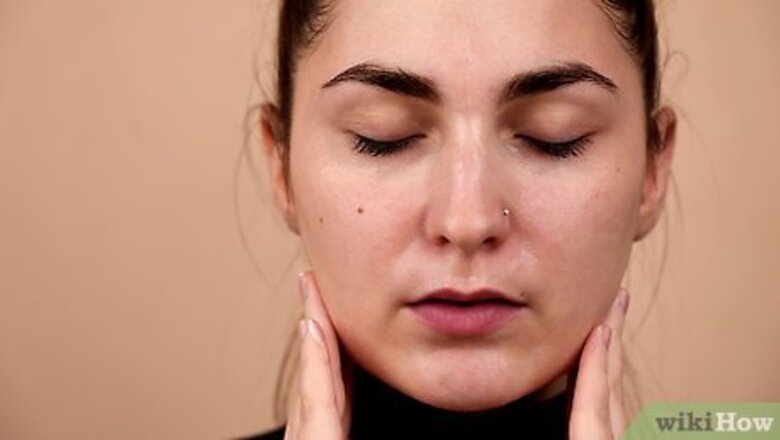
views
- After washing and moisturizing, follow up with an foundation, a translucent powder to set your makeup, and blush.
- Apply a light eyeshadow base, a dark neutral on your eyelid's crease, black eyeliner, lengthening mascara, and if you want, fill in your eyebrows with a pencil.
- Put on any classic lipstick color besides nude and then add a layer of gloss.
Applying Primer, Foundation, Powder, and Blush

Wash your face thoroughly and apply a good moisturizer. Clean and moisturized skin provides a smooth base for your makeup and helps it last longer during a performance. Wash your face thoroughly, then pat your skin dry with a soft towel. Apply a good moisturizer all over your face and neck, followed by a light, colorless balm on your lips. For dry skin, try an exfoliating cleanser to smooth out flaky areas. If you have oily skin, use an alcohol-free toner after you wash, then apply moisturizer. Before you put on your foundation put a makeup primer on your face. Primer will make it easier to put on your foundation. You can use any primer that you want or the Cooling Water Milk Stick by Milk Makeup. The Cooling Water Milk Stick will moisturize your face if you have dry skin.

Apply an oil-free foundation. Use a sponge or brush to apply foundation to your entire face. Choose a shade that matches your skin tone or, if you’re very pale, you may want to go one shade darker. Use makeup with a warm, yellowish undertone, since stage lights tend to be cool in tone. Blend well around your hairline, temples and jaw so that everything looks even. Oil-free foundation will keep your skin looking matte onstage. You have the option of using a foundation stick. Foundation sticks make applying foundation easier. After applying the foundation stick use a sponge or brush to blend it in. Be sure to blend your foundation into your neck so you don't look like you're wearing a mask. Contrary to popular belief, you don’t need to slather on the foundation. Apply just enough to even out your skin tone. Opt for waterproof cream foundations, which do well under stage lights. You can also use a cake makeup, which is formulated for the stage. Try to avoid creamy formulas, since they don’t have a lot of staying power. These can fade fast, leaving you with dark lip liner and pale lips.

Set your makeup with a dusting of translucent powder. Use a fluffy kabuki brush for this, which will give you an even dusting. Dip the brush into the container of powder, then tap it on the edge of the sink or counter to get rid of the excess. Apply one layer of the powder all over your face and neck. This will “set” your makeup, and help it stay in place during your performance. Translucent powder is optional. You can use whatever type of powder that you want. Then blend your powder into your neck.
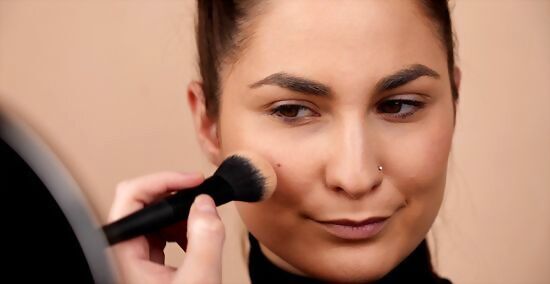
Emphasize your cheekbones with blush. Apply blush from the middle of your cheeks (just outside the center of your eyes) to your ears with a fluffy brush. Aim for the area just below your cheekbone, which is the “hollow” of your cheek. This contours your cheekbones and makes them stand out onstage. Blend the blush in well. Use concealer after applying your foundation. Blend the concealer in with a concealer brush. The concealer will hide the dark circles under your eyes. Apply powder with a powder blush after you put on your concealer and foundation. Then blend the powder into your neck. In general, women should go with a peach, peachy pink, pink, or rosy shade. For men, go with a shade or two lighter than that. If you're concerned about your blush running under the stage lights, use a cream formula.
Accentuating Your Eyes
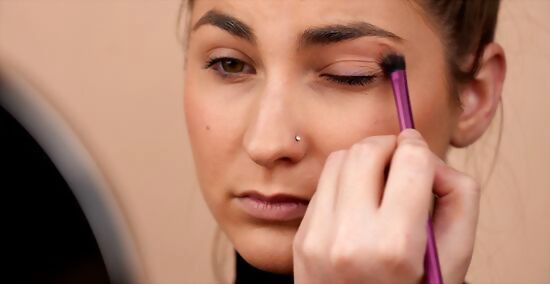
Apply a light eyeshadow color on your lids and under your brows. Select a neutral eyeshadow that is 1-2 shades paler than your skin tone. Use an eyeshadow brush to apply the palest color just beneath your eyebrows. You can use the same color on your lids, or you can use an eyeshadow that is one shade darker. Blend both areas well. Cream formulas work well for eye makeup, especially under hot stage lights.
Apply a dark neutral color into the crease of your eye. Use an eyeshadow brush to apply a dark neutral color, like brown, to the area between the brow and lid, where the skin creases. Be sure to blend the eyeshadow well so there are no hard lines. Depending on the performance, you may be asked to use a brighter color in the crease. If nothing is specified, a neutral brown shade works well.
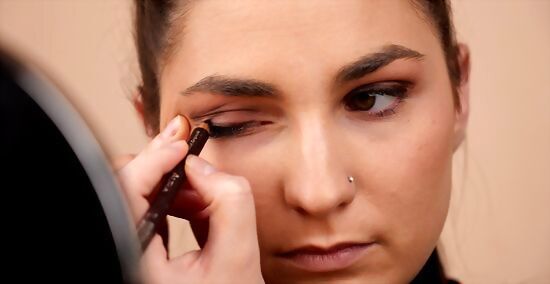
Use brown or black or peach waterproof eyeliner on the upper lash line. Pencil, Marker, and liquid liners all work, as long as they're waterproof. Start at the inner corner and draw a firm, thin line along your upper lash line to the outer edge of your eye. Don’t make the line too thick, unless your role calls for a dramatic look. Make sure the lines are even and both eyes match. Brown, peach, black all work, but black liner will give you more definition. For a more natural look, men may want to go with brown. Optionally, you can apply a white eyeliner pencil to your lower waterline, which makes the eyes look brighter and whiter.
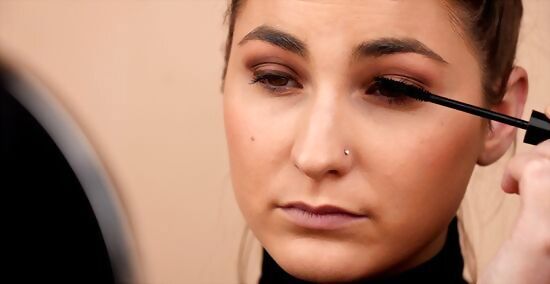
Apply waterproof and volume lengthening mascara to your upper and lower lashes. Aim for 1-3 coats of mascara on the upper lashes and a single light coat on the bottom lashes. Put the wand at the base of your lashes, press lightly, then move it along the lashes to the tips. You can use brown or clear or black mascara, but black provides more definition. Brown works best for men, since it defines the eyes without being too drastic. Make sure you use waterproof mascara, or it could run once you start to sweat beneath the bright stage lights. Optionally put on self adhesive fake eyelashes. Fake eyelashes will make your eyes wider. If you have a hard time putting on false eyelashes use a lash primer before you put your mascara on instead. Curl your lashes with an eyelash curler before hand. This will make it easier to apply the lash primer and mascara. This will give you the look of false eyelashes.
Optionally fill in your brows with a brown pencil if you want to. For more dramatic roles, you may want to opt for black, but dark brown is a good neutral choice for everyone. Fill in any patchy areas so that your eyebrows appear firm and full. Use the pencil to enhance the natural arch of your brow, which will help to frame your face.
Highlighting Your Mouth and Setting the Look
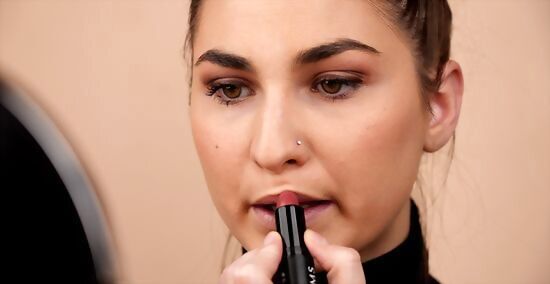
Add lipstick to your lips. Lipstick will make your lips look fuller. You can use red, red orange, pink, or peachy pink lipstick. Avoid doing a nude lip onstage, or your mouth will look non-existent. You can add lip liner before you put on your lipstick if you want to. Lip color requirements usually vary, depending on your role. Most men use a more natural shade. Check with your director if you’re unsure.

Fill in your lips with lipgloss. Follow the natural shape of your lips and fill them in with a lipstick that matches your lip liner. Choose a natural color like light pink or peachy pink. Avoid colors like purple and orange. If you're involved in a vigorous performance and worried about keeping your makeup in place, try misting your face with a setting spray before you apply the powder.
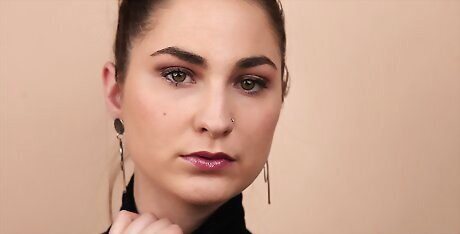
Step back from the mirror and look at yourself. Your makeup should have an exaggerated look to combat the bright stage lighting. The audience will see you from different distances and angles. The people in the front will see you very clearly, so you want to look natural to them. The people who are in the nosebleeds must be able to see your expressions, so stage makeup will help you to accomplish this.











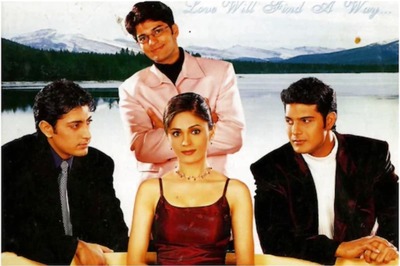


Comments
0 comment